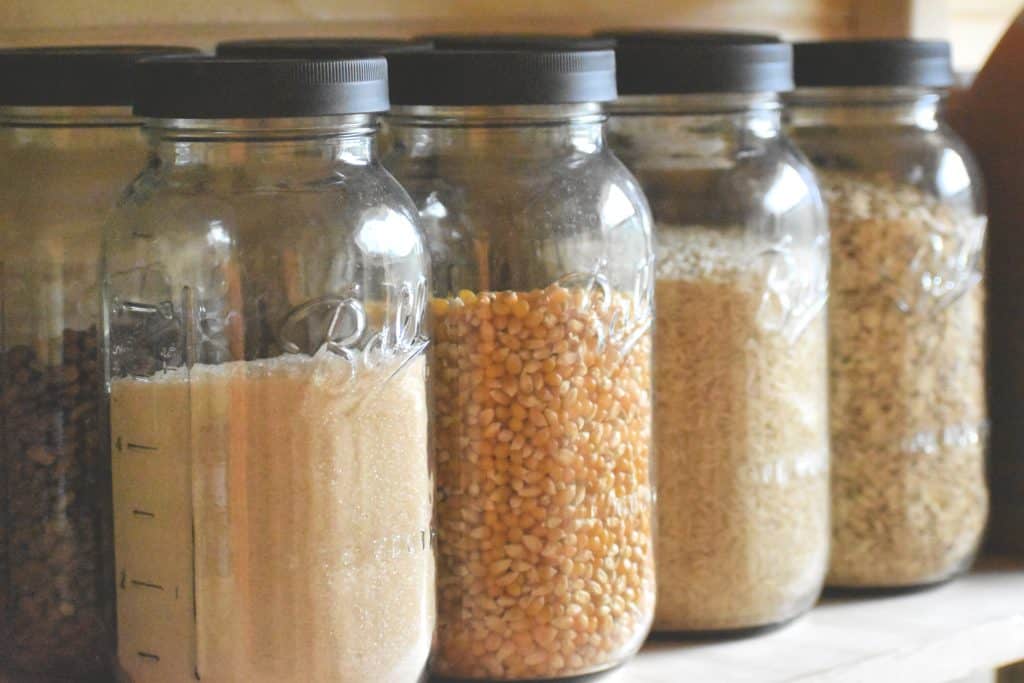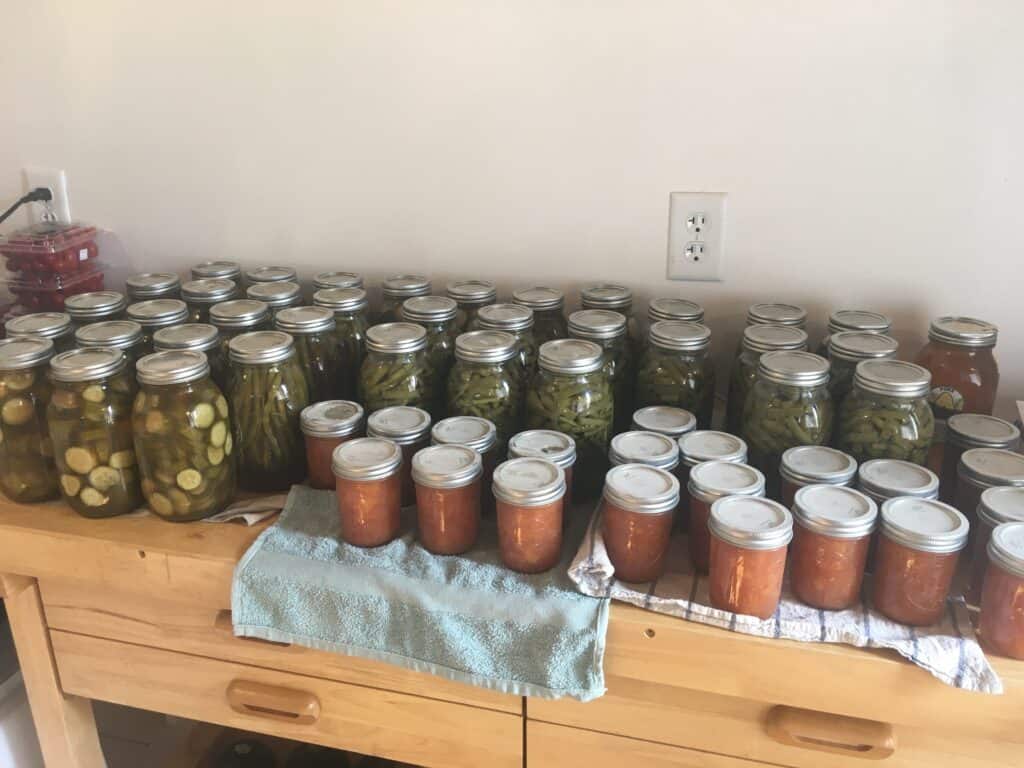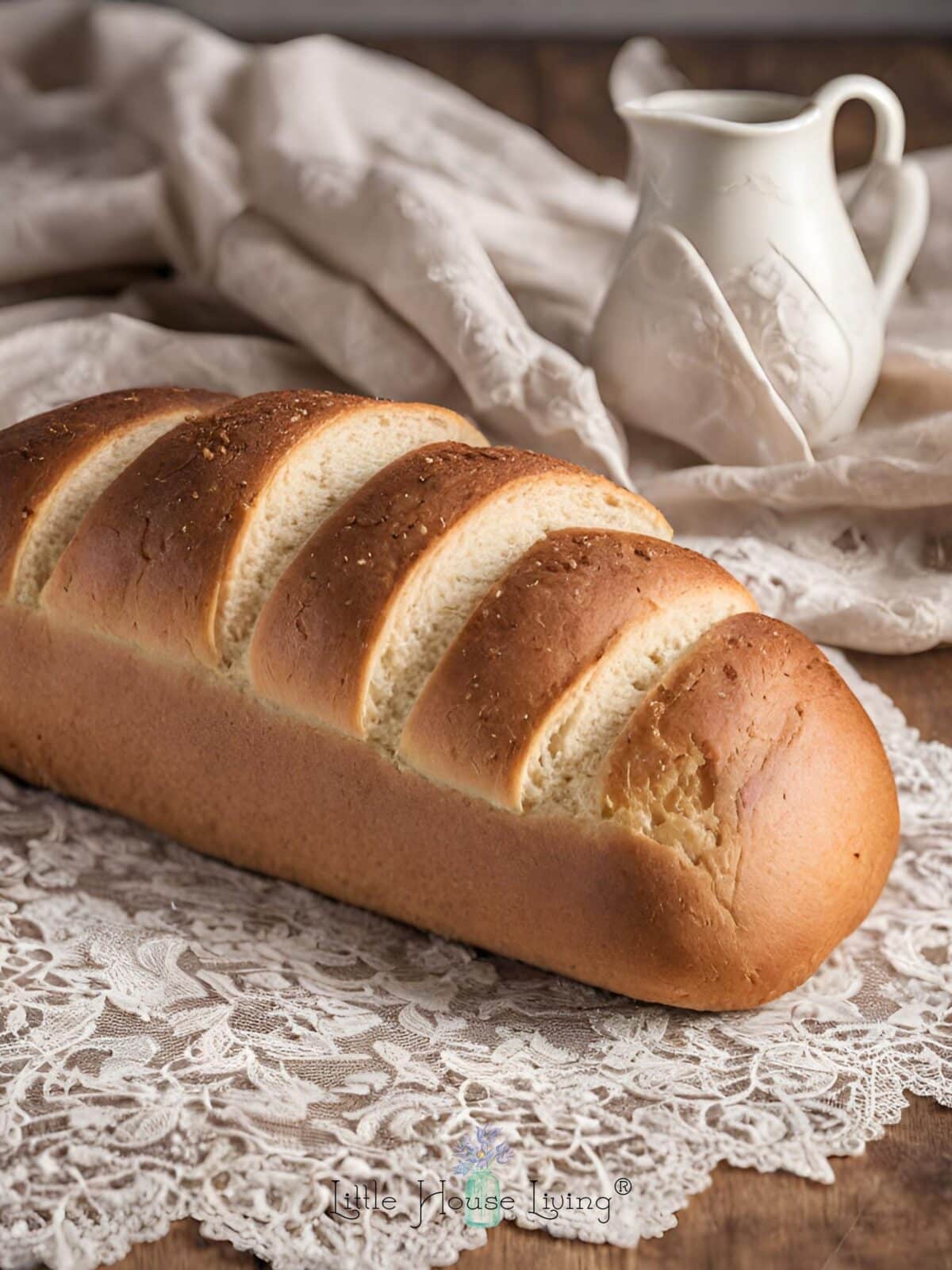20 Frugal Cooking Tips from the Great Depression That Still Work
This post may contain affiliate links. Read our disclosure policy here.
Living through the Great Depression was tough – money was tight, jobs were scarce, and many struggled to afford the basics, let alone whip up a satisfying meal. This article will dive into some simple yet effective cooking tips from the Great Depression that will transform humble ingredients into delicious meals.

These tips are not just born out of necessity; they’re timeless strategies for saving money and reducing waste in the kitchen.
As I’ve mentioned many times on this blog before, my grandma and her family lived during the Great Depression in a very rural part of the country. These are tips that she and her family knew and used!
20 Frugal Cooking Tips from the Great Depression

1. Grow Your Own
During the Great Depression, families often relied on their own resourcefulness by cultivating small home gardens. Growing your own fruits, vegetables, and herbs reduces grocery costs and provides a fresh and sustainable source of ingredients.
Choose easy-to-grow crops based on your climate and available space. Herbs like basil, rosemary, and mint are particularly versatile and can elevate the flavor of various dishes.
2. Use Every Bit
The “waste not, want not” mantra was a crucial aspect of Depression-era cooking.
People consciously tried to utilize every part of an ingredient to avoid unnecessary waste. For example, vegetable scraps were used to make broth, and meat bones were simmered to extract every bit of flavor.
By implementing this approach, you will maximize the nutritional value of ingredients and ensure that nothing goes to waste.
3. Batch Cooking
Batch cooking involves preparing larger quantities of food at once and storing portions for later use. This cooking strategy was practical during the Great Depression, saving time and resources.
You can make the most of your ingredients by cooking in bulk with little to no leftover waste. It’s also an efficient way to ensure that there’s always a meal ready, minimizing the need for daily cooking.

4. Versatile Pantry Staples
Depression-era households often relied on versatile pantry staples like rice, beans, and pasta. These ingredients are not only budget-friendly but also serve as a foundation for a variety of dishes.
The versatility of these staples allows for creativity in the kitchen as they can be combined with vegetables, meats, or simple sauces to create diverse and satisfying meals.
Here’s how to set up a good pantry with basic staples.
5. One-Pot Wonders
One-pot meals were born out of necessity during the Great Depression. With limited resources and sometimes only a single burner or stove, people devised recipes that could be cooked in a single pot or pan.
Try your hand at one-pot wonders like stews, casseroles, or stir-fries. This approach reduces the number of dishes to wash and allows the ingredients’ flavors to meld together, creating a delicious and cohesive dish.

6. Preservation Techniques
Preservation techniques were essential during the Great Depression to make the most out of seasonal abundance and prevent food spoilage. By preserving surplus produce, families could ensure a stable food supply throughout the year.
Canning, pickling, and drying were common methods to extend the shelf life of fruits, vegetables, and even meats. These techniques will help minimize waste and allow you to enjoy a variety of foods regardless of the season.
7. Meat Extenders
With meat being a relatively expensive commodity during the Great Depression, households often employed meat extenders to make the most of their limited supply.
Ingredients like breadcrumbs, rice, oats, or other grains can be mixed with meat to create bulkier dishes. This not only stretches the meat further but also adds texture and substance to meals, ensuring that even small amounts of meat can satisfy hunger and provide a flavorful experience.
I have an entire post on How to Make a Frugal Meal More Filling, so if you want to dive into this further, be sure to check this out.
8. Farmers’ Markets and Local Produce
During the Great Depression, communities often turned to local farmers and markets for fresh, affordable produce.
Shopping locally means fewer transportation costs, and the produce is often more affordable than goods shipped from afar. This practice also encourages a sense of community and sustainability.
9. Repurpose Leftovers
Repurposing leftovers was a cornerstone of Depression-era cooking.
Instead of letting uneaten food go to waste, you can transform your leftovers into new and inventive dishes. For example, yesterday’s roast could become sandwiches, and cooked vegetables could be added to a frittata.
This approach not only reduces food waste but also allows for more opportunities to get creative in the kitchen to make do with what is available.
10. Egg Substitutes
Eggs were often scarce or expensive during the Great Depression, leading to the need for creative egg substitutes in baking. Even if you have chickens, they don’t always like to lay year-round!
Ingredients like applesauce, mashed bananas, or even vinegar and baking soda can be used to replace eggs in various recipes. These substitutes serve the functional purpose of binding and leavening and add unique flavors and textures to baked goods.
11. Simple Desserts
During the Great Depression, simplicity was emphasized, and making the most of basic ingredients extended to desserts.
Sugar may have been scarce, but resourceful bakers turned to naturally sweet ingredients like dried fruits, molasses, and honey to satisfy the sweet tooth without breaking the bank.
Classic desserts like bread pudding, fruit cobblers, and rice pudding are both delicious and economical as they can be made with pantry staples without the need for elaborate or expensive ingredients.
Here’s my list of Frugal Desserts you can try if you need some inspiration.

12. Homemade Bread
Baking bread at home with basic ingredients like flour, yeast, salt, and water was a practical and cost-effective way to feed the family during the Great Depression.
Making bread from scratch saves you money compared to buying pre-packaged loaves and allows for control over the ingredients. Plus, there’s just something satisfying about the aroma of freshly baked bread wafting through your kitchen. This is our favorite Basic Bread recipe as well as our favorite Gluten Free Bread Recipe.
13. Soup Nights
Soup nights were common during the Great Depression, reflecting both frugality and a sense of community. Families would gather to share different types of soups made from affordable ingredients. If you are making your own broth and doing things like making Garbage Soup, you can really stretch a buck!
Soups are economical and versatile, as they allow you to use leftovers and stretch ingredients from your fridge and pantry.
14. Community Sharing
In times of scarcity, communities banded together, and neighbors would share surplus produce, trade homegrown goods, or even swap recipes. This helped ensure that everyone had access to a variety of foods despite individual financial constraints.
Consider reviving this community spirit by participating in local food swaps, sharing excess garden produce, or collaborating on meal planning with neighbors.
15. Bartering and Trading
Bartering and trading were essential survival strategies during the Great Depression.
Families and communities engaged in exchanging goods and services, including food items. If one family had an abundance of one item but lacked another, trading with another family who had what they needed was a sensible solution.
You can explore modern versions of bartering through local online platforms, community groups, or even with friends and family. I have a big post on How to Barter here.
16. Bulk Buying
Bulk buying was a strategic approach during the Great Depression to take advantage of lower prices and secure a stable food supply. Families would pool resources to purchase staples like grains, beans, and sugar in larger quantities.
Buying in bulk often means a lower cost per unit, making it a practical way to save money in the long run. However, it’s essential to have proper storage to prevent spoilage or waste.
17. Economical Cuts of Meat
During the Great Depression, expensive cuts of meat were a luxury many couldn’t afford, so people turned to economical cuts of meat.
These cuts are typically tougher and less expensive, but they can be transformed into flavorful and tender dishes through slow cooking methods like braising or stewing. This not only stretched the budget but also made the most out of every part of the animal.

18. Forage for Flavors
Foraging for flavors involves utilizing ingredients readily available in nature, such as wild herbs, berries, and other edible plants, to enhance the flavors of their meals.
While foraging requires knowledge to ensure safety, it can be a rewarding way to add unique flavors to your meals and reduce reliance on store-bought seasonings, herbs, and plants. Identify local, edible plants in your area, and consider incorporating them into your dishes. It’s free food!
19. Stretching Dairy
Dairy products were often in short supply during the Great Depression. To make them last longer, people found creative ways to stretch dairy.
For instance, milk can be watered down to extend its use, and sour milk can be used in baking. Every part of milk, including cream, buttermilk, whey, etc., was used. You can apply these principles today by being mindful of dairy expiration dates, using milk alternatives when appropriate, and finding creative ways to repurpose dairy products in cooking and baking.
20. Mindful Shopping
Great Depression-era shoppers were incredibly mindful of their purchases. Making shopping lists and planning meals ahead of time helped avoid impulse buys.
Prioritizing essential items and sticking to a budget were crucial aspects of mindful shopping. Embrace this practice by planning your weekly meals, creating a detailed shopping list, and avoiding unnecessary purchases.

There you have it – these cooking tips from the Great Depression are valuable treasures we can still use today. They teach us smart cooking methods that are friendly to our wallets, good for the environment, and bring communities together.
By implementing some of these tips, you’ll save money and add a dash of creativity and sustainability to your culinary adventures. Happy cooking!

More Frugal Tips
- 23 Frugal Living Tips from the Great Depression You Need to Know
- Frugal and Easy Cooking Substitution Solutions
- Frugal Laundry Tips & Strategies – A Comprehensive Look
- The Cheapest Meals to Make on an Incredibly Tight Budget

Merissa Alink
Merissa has been blogging about and living the simple and frugal life on Little House Living since 2009 and has internationally published 2 books on the topic. You can read about Merissa’s journey from penniless to freedom on the About Page. You can send her a message any time from the Contact Page.
This article on Frugal Cooking Tips from the Great Depression was originally posted on Little House Living in January 2024.



Great reminders. I can vouch for the garden idea. Growing up Dad’s garden was so big, the only thing we got from the store was dairy and meat. When I got out on my own, I was so disapointed with the quality canned food. Canned limas were more mush than flavor. Then when I spent time driving truck with my husband we hauled produce from Califorina to Chicago. What we got was picked before it was ripe. so it wouldn’t spoil before it got to the store. The refer trailer was equiped with a gas powered cooling unit. All of that travel and equipment upped the cost of the food and did nothing for the quality of it.
My advice for novice growers – start with windowsill herbs. That can be done year round.